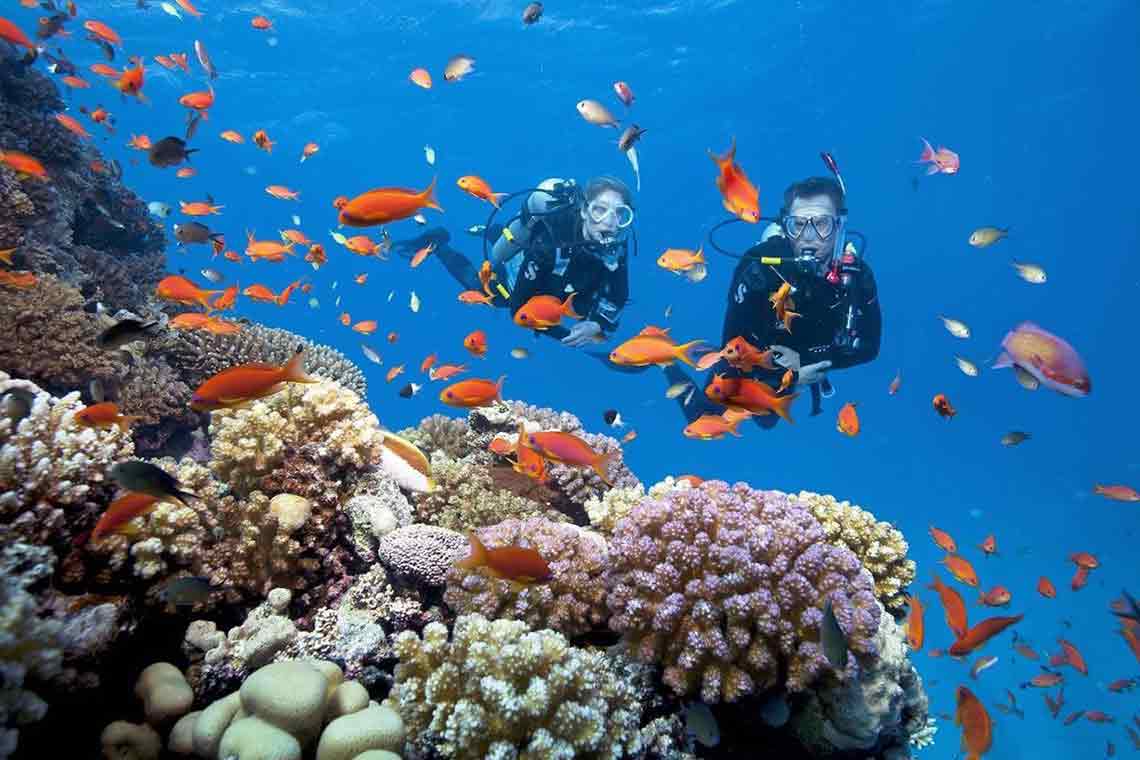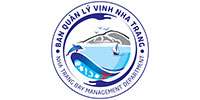Inspection and handling of administrative violations
Preserving and promoting the national cultural heritage is the key task of the Cultural Development Strategy. In recent years, the conservation and promotion of tangible and intangible cultural heritage values in the province have been paid more and more attention.
The marine protected area (MPA) of Nha Trang Bay (Khanh Hoa province) includes islands such as Hon Tre, Hon Mieu, Hon Tam, Hon Mot, Hon Mun, Hon Cau, Hon Vung … and surrounding waters. Area of about 160 km², of which about 38 km² of ground and 122 km² of water area around the islands.
Nha Trang Bay is one of the most important areas for marine conservation and marine tourism in Vietnam. Coral reefs are of international importance and the highest biodiversity in Vietnam, including more than 222 species of reef fish, over 350 species of coral (accounting for 40% of coral reefs created in the world), 120 species of mollusks. , 70 species of crustaceans, 30 species of echinoderms, 70 species of seaweed and about 7 species of seagrass …, with diverse and rich marine ecosystems.
HST coral reef
Coral reefs play an important role in forming and protecting the bottom structure, maintaining the natural flow. Coral reefs are a haven for breeding, breeding and development of many marine species. According to studies and statistics, Nha Trang Bay is a well-developed coral area, covering an area of about 252 ha with very high coverage and concentrated in areas of Hon Mun (22 ha), Hon Tam (20 ha), Hon Rom (3.2 ha), Hon Vung (4.6 ha), Hon Cau (3.2 ha) … Currently, only Hon Mun and Hon Rom are home to the similar coral reef. stability remains in VinPearl – Hon Tre, Bich Dam, Hon Mot devastated by fishing activities and environmental impacts. Currently, the Institute of Oceanography has studied and planted and restored and successfully recreated corals in the wild. In recent years, Nha Trang Bay Management Board has made an effort to protect the coral reef intact at Hon Mun Strict Protection Sub-Area and maintain the coral in good condition.
Mangrove ecosystem
The area of mangroves in Khanh Hoa province is about 104.08 ha, of which, Nha Trang Bay has about 7 ha. This shows the decline of mangroves and loss of habitat for aquatic species. In recent years, mangroves have been restored.
HST seagrass carpet
The total area of seagrass beds in the whole Nha Trang Bay is about 78 hectares. Distributed mainly in Dam Tre, Hon Chong and Nam Tri Nguyen. Seagrass beds play an important role in the absorption of nutrients and metals in the marine environment to improve environmental pollution. At the same time, it is home to many species of sea creatures. Over the years, seagrass has been severely degraded due to environmental pollution, especially sediments have been buried massively in areas with seagrass beds. Although seagrass does not bring high economic value, it has a stable role, balancing biodiversity and maintaining aquatic resources.
In general, the ecosystems have contributed to creating biodiversity values, abundant aquatic resources in Nha Trang Bay, bringing economic values and prospects for sustainable tourism development.
However, in previous years, the problem of unreasonable fishing and exploitation (exploiting with explosives, poisons, destructive fishing, etc.) together with environmental pollution made the problem. Marine biodiversity in this area is at an alarming decline.
Facing this situation, since 2001, Hon Mun MPA (renamed in Nha Trang Bay MPA in 2005) – the first marine conservation project in Vietnam was officially launched. The project was implemented by the Ministry of Fisheries (now the General Department of Fisheries – the Ministry of Agriculture and Rural Development), the People’s Committee of Khanh Hoa province and the World Union for Nature Conservation (IUCN). The purpose of the Project is to preserve a typical model of marine biodiversity of international importance and is at stake; helping communities in islands improve their lives; cooperation with stakeholders to effectively protect and manage marine biodiversity in Nha Trang Bay MPA, creating a model of collaborative management for Vietnam’s MPAs.
After the project ended, the MPA has installed 100 mooring buoys to limit the destruction of corals, established marine conservation boards, and promoted educational activities to raise awareness about marine environmental protection. for the citizen. In particular, the project has implemented a pilot farming of “environmentally friendly” objects such as cartilaginous seaweed, sea cucumbers, green mussel, lion, grouper to generate income for people and for more than 140 households. borrow capital to change industries and develop production. Currently, most of the area in the nature reserve is covered by coral reefs and newly planted and expanded mangrove systems, many seagrass beds have shown signs of restoration …
In order to improve the lives of people, the Sustainable Livelihood Component in and around MPAs (LMPA) and Nha Trang Bay MPA Authority has implemented many community development activities, supporting livelihoods for people. People like aquaculture, handicrafts, animal husbandry, ecotourism and credit … Especially, the establishment of shellfish livelihoods group is managed by the Women’s Union of Vinh Nguyen ward with the purpose of development. livelihood development activities on sustainability. The Group’s activities are to develop shellfish trade, responsible for managing and purchasing materials for the islands; collecting finished products for sale to dealers or production facilities. The Women’s Union and the households participating in the program are entitled to borrow capital from the Poverty Reduction Fund of the LMPA Component with a total capital of 350 million VND. In the first 10 months, the development of snail shells has initially gained efficiency, creating jobs for many women in 5 islands in Nha Trang Bay MPA.
In addition, the Nha Trang Bay MPA Authority regularly organizes and participates in monitoring the activities taking place on the bay; surveying water quality, building a database of environmental factors for Nha Trang Bay; surveying biodiversity, building ecological map of Nha Trang bay … The Board also mobilizes and attracts the participation of the community in MPA management, organizing the conservation board of marine groups in the neighborhood. . They are representatives of the residents in the MPA who are elected by the people and bring the voice of the people to participate in the meetings of the Management Board; organize patrol teams with the participation of people, shifts 24 hours a week to patrol fishermen to use explosives and poisons to exploit aquatic resources. Every year, the Management Board of Nha Trang Bay MPA organizes many propaganda about relevant regulations on environmental protection, landscape protection of Nha Trang Bay and biodiversity protection activities for people and groups. social organizations, businesses, students, students; coordinate with 10 schools to organize a program of marine environmental education for students to raise awareness about environmental protection, landscapes and natural resources in Nha Trang Bay. At the same time, the MPA Management Board has mobilized individuals and organizations to plant more than 5 hectares of mangroves in Dam Bay and capture millions of sea starfish in order to contribute to balancing the ecosystem, protecting biodiversity, seagrass beds and mangrove development in Nha Trang Bay.
Although, Nha Trang Bay MPA is facing many challenges such as: socio-economic development in coastal areas has a significant impact on the environment landscape, marine ecosystems; life of the majority of people is still difficult so they can destroy aquatic resources for a living. Therefore, an effective management plan is needed to sustainably develop socio-economic and protect the biodiversity values of the MPA.






